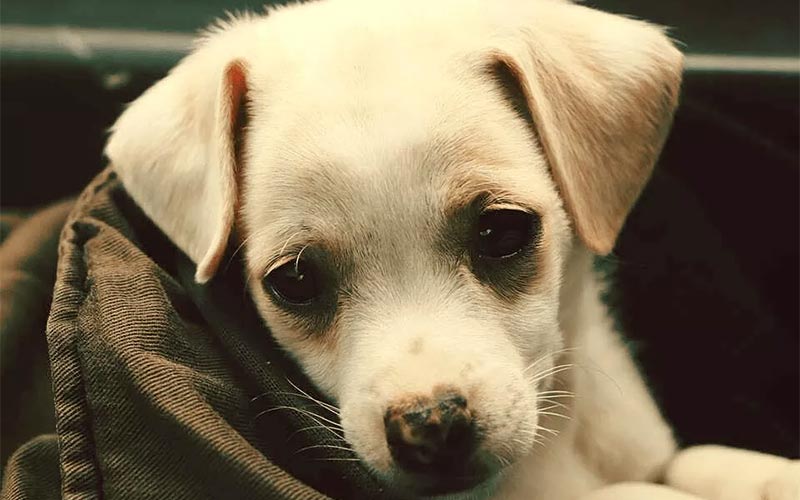PETS IN PARKED CARS: A REMINDER ABOUT DOGS AND HEAT STROKE
Summer is upon us! And here at Fisher Glen Animal Hospital, we love the summer – there’s nothing better than a fun family BBQ or a sunny day at the beach. But while we are all enjoying the wonderful weather, it is important to always remember that our four-legged family members have only a very limited capacity to beat the heat. This can lead to heat exhaustion or even death. Every year, hundreds of pets die from heat exhaustion because they are left in parked vehicles. So never ever leave your cats or dogs in hot cars, and keep an eye out for other signs of heat exhaustion in your pets. Read on to learn more about dogs and heat stroke!
Dogs and Heat Stroke: The Facts
Unlike you and I, dogs can not sweat to cool off. They get rid of heat primarily through their tongues and airway. As a result, dogs are in frequent danger of overheating, especially when the weather becomes humid and evaporation off the tongue is slowed down. Furthermore, heat stroke can permanently damage a dog’s thermoregulatory system, predisposing them to further heat problems. This is why it is vitally important to recognize the signs of overheating and stop it before it progresses to heat stroke.
Preventing Heat Exhaustion
Dogs can react to heat in different ways. Brachycephalic breeds (flat-nosed dogs like pugs, bulldogs, and boxers), older, obese, and pregnant dogs are more prone to heat stroke. Young active dogs, especially large breeds and dogs with thick coats are prone to exertional hyperthermia – overheating from exercise. Always pay attention to your dog and your dog’s mood, because even a healthy dog can have an off day. Here are a few additional tips to help you prevent heat exhuastion in your favourite pup.
- Hydrate
Offer water at the signs of panting, and avoid exercise if your dog isn’t drinking enough. Encourage your dog to pre-drink plenty of water in anticipation of a long walk. Additionally, avoid letting your dog drink from puddles, as they can pick up diseases transmitted from other animals. Always carry clean water for yourself and your dog.
- Time Your Walks
On very hot days, try to exercise your dog only before sunrise or after sunset.
- Watch What You Wear
If you’re wearing a t-shirt or tank top, remember your pal probably needs a rest!
- Rest Early
Stop at the earliest signs or overheating -panting or slowing down- and wait until your dog cools off.
- Seek Shade
Dogs seek shade instinctively when it’s hot. The sun alone is enough to overheat a dog, especially one with a thick, dark coat or a health condition. Rest and walk in the shade as much as possible, and never tie a dog in the sun or leave it in the yard without shade.
- Get Wet
Wet down your dog’s coat, take them for a swim, or spray them with the garden hose.
- Beware Of The Car
NEVER leave your dog in a car in the sun. Even in cool weather, the temperature in a car can climb above 48°C (120°F) in 20 minutes. Don’t put your dog right into the car after exercising, either. Cool off both the car and your dog first. Turn on the air conditioning or open the car windows to keep the temperature moderate while you drive.
Signs Of Overheating
Overheating, or hyperthermia, happens when there is a build up of body heat and your dog’s body temperature climbs above the normal maximum of 39.3°C (102.5°F). Hyperthermia begins as heat stress and progresses to heat exhaustion and then, if untreated, to heat stroke, which can be fatal. Here are the signs to watch out for, from mild to severe.
- Heavy panting, tongue extended
- Slowing pace
- Shade seeking
- Intense thirst
- Red gums (due to increased blood flow to the mouth)
- Rapid heart rate, bounding pulse, followed by weak pulse due to dehydration
- Rapid, laboured breathing
- Heaving chest
- Anxiety and confusion
- Staggering and falling
- Fainting
- Vomiting and diarrhea
- Seizures
- Coma
Treating Heat Exhaustion
Here are some steps you can take to help alleviate the symptoms of heat exhaustion, until you can get your dog to the vet.
- Move to a cool, shaded area
- Encourage drinking
- Gently hose with cool water or, better, submerge in cool water, keeping water away from the dog’s airway if it’s anxious and panting.
- Check temperature every 15 minutes, and keep cooling down to 39.3°c (102.5°F) being careful not to go any lower.
- Transport to a veterinarian while keeping the dog cool with ice packs and water.
For more information about heat stroke and other pet health risks, check out the Ontario Veterinary Medical Association’s Pet Safety Tips! If you are worried that your pet might be suffering from heat exhaustion, please don’t hesitate to Contact Us right away!


